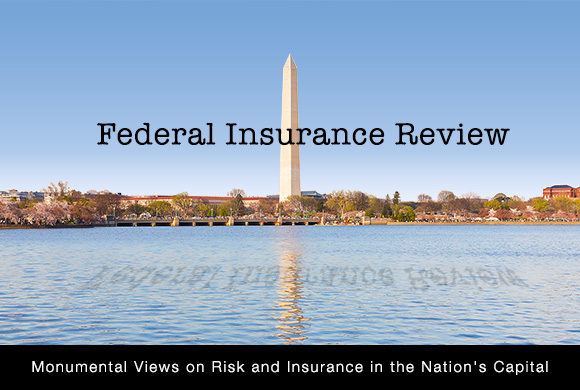Last week, the House of Representatives voted 237-189 to pass the 21st Century Flood Reform Act (H.R. 2874) – a package of seven bills that reauthorizes the National Flood Insurance Program (NFIP) until 2022 and introduces various reforms. The fate of that legislation and the NFIP now rests with the Senate. The following commentary from Matt Nielsen of risk modeling firm RMS discusses the legislation and what will happen if it is enacted into law and what will happen if it fails.
Originally created to provide flood designations and insurance to risk-prone properties, the National Flood Insurance Program (NFIP) has since become the largest insurer of flood in the United States. The program, however, was never designed to handle large catastrophes; its rating schemes only collected enough premium to cover an “average” loss year. The NFIP may now face upwards of $40 billion in debt after the devastating flooding seen in Hurricanes Harvey, Irma, and Maria in 2017.
House Passes Flood Insurance Program Extension with Reforms
Congress has a chance in 2017 to reform the NFIP, hoping to create a public-private partnership to transfer risk to the private insurance sector. The longer that the NFIP continues on its current path of designing rates based on an average flood year, the further into debt it will fall over the long run. The benefit of private market participation is that insurance companies can diversify their risk, while NFIP is stuck with only adverse risk selection. A private company can write flood risk and balance that risk with a non-correlated risk elsewhere to ease some of the pricing. The point here is that it isn’t a guarantee that rates will rise for homeowners across the board if the NFIP can effectively collaborate with the private market.
One of the largest issues this NFIP reform bill tackles is the easing of acceptance of private flood policies by government-backed mortgage lenders. There has been hesitancy from mortgage lenders to accept private flood policies due to a requirement that a flood policy on a house with a federally backed mortgage must be an NFIP or NFIP-equivalent policy. The ambiguity has been in the interpretation of what “NFIP-equivalent” really means? Does it mean the same limits? The same deductibles? Florida recognized this issue early on and passed flood legislation in 2014 that specifically designated a new policy type as being “NFIP equivalent” by definition. This flexibility will allow homeowners who want to purchase a private flood insurance policy the confidence that their mortgage lender will accept their alternate, and in many cases, tailored insurance policy.
Implications If Bill Passes Senate As-Is
Once the bill passes the Senate, the real work on building a cooperative insurance industry between the Federal Emergency Management Agency (FEMA0 and the private market will begin. The onus will be on the private market to start the process of building flood portfolios and ceding risks from the current NFIP market. Companies will have to test new insurance policy structures and begin marketing campaigns to those in flood-prone areas. They will also need to use analytics to identify the appropriate grow areas and expansion rate of their flood business.
FEMA will need to work on improving its flood quantification methodologies with outside partners, as well as design a platform to share the large quantity of flood risk data that the industry needs to quantify and price the risk appropriately
Ultimately there will be lessons on the flood insurance model success that will be portable to other underinsured scenarios, such as California earthquake. A success in flood can have implications for many other underinsured Americans.
Implications If Bill Doesn’t Pass Senate
The largest elephant in the room will be the $40 billion debt that FEMA will have incurred after the bills for the 2017 hurricanes have been tallied. The NFIP was never meant to absorb the losses of large catastrophes, and the debt must either be forgiven, or NFIP rates will have to be increased to slowly pay it down over time. Either way, the U.S. taxpayer is at high risk for being on the hook to bail them out.
In the long run, the private flood market may flourish in small pockets in states like Florida that have already addressed some of the issues found in this bill, but a country-wide move towards higher flood insurance penetration will stall. Large flood events like Hurricane Harvey will continue to occur with regularity, causing regional economic disruption due to the low percentage of homes insured for the flood peril.
Related:
Topics Legislation Flood
Was this article valuable?
Here are more articles you may enjoy.



 Court Orders Justice Family Coal Companies to Pay $1M to Liberty Mutual Unit
Court Orders Justice Family Coal Companies to Pay $1M to Liberty Mutual Unit  SIAA Announces Strategic Partnership With Progressive
SIAA Announces Strategic Partnership With Progressive  CEOs on Guard as Trump Rattles Companies With Series of Edicts
CEOs on Guard as Trump Rattles Companies With Series of Edicts  Florida Lawmakers Ready for Another Shot at Litigation Funding Limits
Florida Lawmakers Ready for Another Shot at Litigation Funding Limits 

